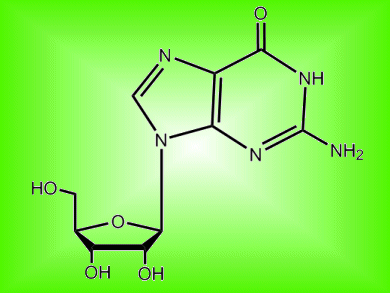Guanosine (pictured) is released by neurons and glial cells and plays important roles in the central nervous system, including neuroprotection. A binding site for guanosine, different from the well-known adenosine receptors, was detected on rat brain membranes, and it could be the target for innovative treatment of neurodegeneration.
Gloria Cristalli and co-workers, University of Camerino, Italy, optimized an innovative assay and synthesized a series of guanosine analogues for characterizing this putative guanosine binding site at rat brain membranes.
Results of their experiments show that guanosine derivatives (but not adenosine analogues) activate this receptor with varying potency and, in some cases, at very low concentrations. These compounds could be useful tools for further characterization of the putative guanosine receptor and for an improved understanding of its role in ischemic and neurodegenerative pathways. They could also represent leads in the development of new drugs for treating neurodegenerative diseases.
- Evidence for the Existence of a Specific G Protein-Coupled Receptor Activated by Guanosine
R. Volpini, G. Marucci, M. Buccioni, D. Dal Ben, C. Lambertucci, C. Lammi, R. C. Mishra, A. Thomas, G. Cristalli,
ChemMedChem 2011, 6(06).
DOI: 10.1002/cmdc.201100100




